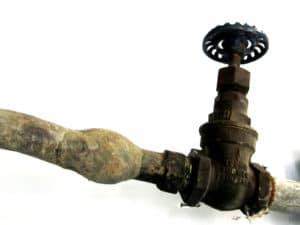EPA Releases FY24 DWSRF Allotments for Lead Service Line Replacements
 On Thursday, 5/2, EPA released the Fiscal Year 2024 (FY24) Drinking Water State Revolving Loan Fund allotments for lead service line replacements (LSLR). EPA has estimated a total of 9 million lead services lines across the country, based on data collected from the updated 7th Drinking Water Infrastructure Needs Survey and Assessment (DWINSA). The funding will be provided specifically for lead service line identification and replacement and will help every state and territory fund projects to identify and to remove lead service lines. The formula and allotments are based on need — meaning that states that have estimated a larger number of lead service lines proportionally receive more funding. It should be noted that the initial lead service line inventories required by the 2021 Lead and Copper Rule Revisions are due on October 16, 2024.
On Thursday, 5/2, EPA released the Fiscal Year 2024 (FY24) Drinking Water State Revolving Loan Fund allotments for lead service line replacements (LSLR). EPA has estimated a total of 9 million lead services lines across the country, based on data collected from the updated 7th Drinking Water Infrastructure Needs Survey and Assessment (DWINSA). The funding will be provided specifically for lead service line identification and replacement and will help every state and territory fund projects to identify and to remove lead service lines. The formula and allotments are based on need — meaning that states that have estimated a larger number of lead service lines proportionally receive more funding. It should be noted that the initial lead service line inventories required by the 2021 Lead and Copper Rule Revisions are due on October 16, 2024.
While many states and territories did not see any significant changes in allotment percentages between FY23 and FY24 based on the updated DWINSA, some states saw increases in their respective percentages that resulted in increased funding – the four states with the largest increases in the allotment percentges and the resultant funding increases are shown below:
- Minnesota – FY23, $37,896,000 FY24, $86,566,000, an increase of $48,670,000 (+148% in funding)
- New Jersey – FY23, $82,971,000 FY24, $123,110,000, an increase of $40,139,000 (+48% in funding)
- Georgia – FY23, $28,650,000 FY24, $59,497,000, an increase of $30,847,000 (+108% in funding)
- Ohio – FY23, $166,913,000 FY24, $184,273,000, an increase of $17,360,000 (+10% in funding)
The four staes with the largest decreases in the allotment percentages and the resultant funding decreases are shown below:
-
- Texas – FY23, $146,246,000 FY24, $28,650,000, a decrease of $117,596,000 (-80% in funding)
- Florida – FY23, $254,788,000 FY24, $228,679,000, a decrease of $26,109,000 (-10% in funding)
- Connecticut – FY23, $39,954,000 FY24, $28,650,000, a decrease of $11,304,000 (-28% in funding)
- North Carolina – FY23, $87,290,000 FY24, $76,201,000, a decrease of 11,089,000 (-13% in funding)
Alongside the funding announced today, EPA is also releasing a new memorandum that clarifies how states can use this and other funding to most effectively reduce exposure to lead in drinking water. Additionally, EPA has developed new outreach documents to help water systems educate their customers on drinking water issues, health impacts of lead exposure, service line ownership, and how customers can support the identification of potential lead service lines in their homes.

